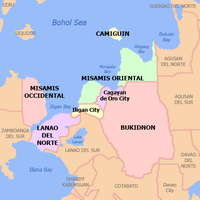
Northern Mindanao is an administrative region in the Philippines, designated as Region X. It comprises five provinces: Bukidnon, Camiguin, Misamis Occidental, Misamis Oriental, and Lanao del Norte, and two cities classified as highly urbanized, all occupying the north-central part of Mindanao island, and the island-province of Camiguin. The regional center is Cagayan de Oro. Lanao del Norte was transferred to Northern Mindanao from Region XII by virtue of Executive Order No. 36 in September 2001.

Misamis Oriental, officially the Province of Misamis Oriental, is a province located in the region of Northern Mindanao in the Philippines. Its capital, largest city and provincial center is the city of Cagayan de Oro, which is governed independently from the province.
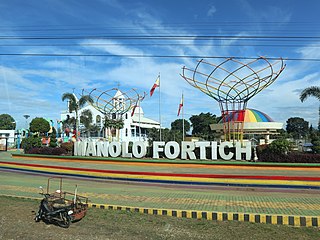
Manolo Fortich, officially the Municipality of Manolo Fortich, is a 1st class municipality in the province of Bukidnon, Philippines. According to the 2020 census, it has a population of 113,200 people.
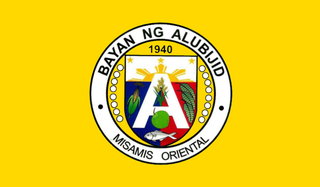
Alubijid, officially the Municipality of Alubijid, is a 4th class municipality in the province of Misamis Oriental, Philippines. According to the 2020 census, it has a population of 32,163 people.

Binuangan, officially the Municipality of Binuangan, is a 6th class municipality in the province of Misamis Oriental, Philippines. According to the 2020 census, it has a population of 7,441 people, making it the least populated municipality in the province.
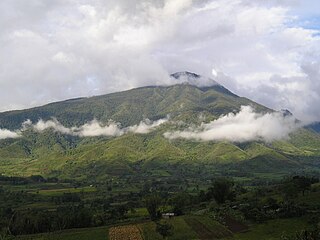
Claveria, officially the Municipality of Claveria, is a 1st class municipality in the province of Misamis Oriental, Philippines. According to the 2020 census, it has a population of 52,478 people.

Gitagum, officially the Municipality of Gitagum, is a 5th class municipality in the province of Misamis Oriental, Philippines. The municipality is bounded on the north by Mindanao Sea, on the east by the Municipality of Laguindingan, on the south by the Municipality of Alubijid and on the west the Municipality of Libertad. It is approximately 40 km. away from Cagayan de Oro. According to the 2020 census, it has a population of 17,920 people.

Balingoan, officially the Municipality of Balingoan, is a 5th class municipality in the province of Misamis Oriental, Philippines. According to the 2020 census, it has a population of 11,020 people.
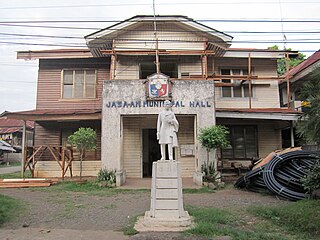
Jasaan, officially the Municipality of Jasaan, is a 2nd class municipality in the province of Misamis Oriental, Philippines. According to the 2020 census, it has a population of 57,055 people.

Laguindingan, officially the Municipality of Laguindingan, is a 4th class municipality in the province of Misamis Oriental, Philippines. According to the 2020 census, it has a population of 26,363 people.

Libertad, officially the Municipality of Libertad, is a 5th-class municipality in the province of Misamis Oriental, Philippines. According to the 2020 census, it has a population of 12,948 people.

Lugait, officially the Municipality of Lugait, is a 2nd class municipality in the province of Misamis Oriental, Philippines. According to the 2020 census, it has a population of 20,559 people.

Magsaysay, officially the Municipality of Magsaysay, is a 4th class municipality in the province of Misamis Oriental, Philippines. According to the 2020 census, it has a population of 36,803 people.

Manticao, officially the Municipality of Manticao, is a 4th class municipality in the province of Misamis Oriental, Philippines. According to the 2020 census, it has a population of 29,469 people.

Medina, officially the Municipality of Medina, is a 4th class municipality in the province of Misamis Oriental, Philippines. According to the 2020 census, it has a population of 35,612 people.

Opol, officially the Municipality of Opol, is a 2nd class municipality in the province of Misamis Oriental, Philippines. According to the 2020 census, it has a population of 66,327 people.

Sugbongcogon, officially the Municipality of Sugbongcogon, is a 5th class municipality in the province of Misamis Oriental, Philippines. According to the 2020 census, it has a population of 9,764 people. Sugbongcogon became an independent municipality on June 22, 1963.
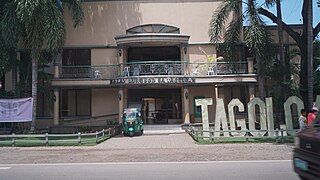
Tagoloan, officially the Municipality of Tagoloan, is a 1st class municipality in the province of Misamis Oriental, Philippines. It is located to the east of Cagayan de Oro and located south-east of Macajalar Bay. According to the 2020 census, it has a population of 80,319 people.

Talisayan, officially the Municipality of Talisayan, is a 4th class municipality in the province of Misamis Oriental, Philippines. According to the 2020 census, it has a population of 25,761 people.
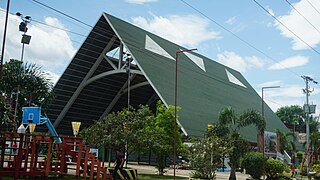
Villanueva, officially the Municipality of Villanueva, is a 2nd class municipality in the province of Misamis Oriental, Philippines. According to the 2020 census, it has a population of 40,419 people.


























